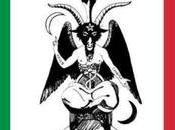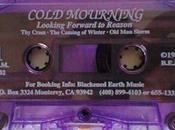
Il compito è quello di fornire alcuni aiuti pertinenti e utili alla navigazione senza compromettere l’esperienza di ascolto, unica e personale. Ripensandoci, mi pare ovvio che ho intrapreso un viaggio con uno scopo. Passeggiare per quel mondo che chiamiamo Sonata, mi rendo conto, è stata tanto una questione di esplorazione di ciò che può propriamente essere chiamato materia musicale quanto di delineare l’area di movimento. E in un senso molto Junghiano riconoscere ciò che è mio, ciò che veramente e in modo autentico mi appartiene e quello che posso – alla fine di ogni giorno – possedere totalmente.
La comprensione – subito dopo il completamento della prima Sonata per chitarra sola e quella per due chitarre – che forma e struttura non sono la stessa cosa, ha trasformato completamente la mia scrittura dei movimenti di una sonata, in particolare, e in generale il mio modo di comporre. La forma serve ad uno scopo, la struttura ad un altro. La forma suscita nella nostra mente un particolare insieme di aspettative, la struttura produce un primo piano individuale di realtà appartenenti a ciascuna opera. Tra le altre cose, la forma aiuta a definire il modello esteriore delle opere musicali e ad impostare alcune aspettative molto ben definite; la struttura – attraverso la riorganizzazione interna e particolare delle idee musicali – è al servizio delle finalità emotive di ciascuna specifica composizione.
La Sonata n° 1 esprime il concetto che forma e struttura sono identici e che una sonata è un’opera scritta in base a una prescrizione largamente accettata. Ovviamente non è così. Propongo che questa formula sia lo sfondo sul quale viene scritta una nuova sonata: questo significa che la stessa viene creata una struttura diversa, pur mantenendo le caratteristiche importanti di ciò che ci si aspetta. Sul piano armonico e tematico, il primo movimento segue percorsi prevedibili. Tuttavia, il secondo tema scaturisce dal profondo del mio patrimonio etnico. Il terzo movimento, essendo una danza in 5/8 – quello che viene chiamato anche ritmo zoppo – conferma come quella ricca vena popolare appartenga al mio mondo musicale, il mondo nel quale sono cresciuto.
Una registrazione di tutte le quattro Sonate offre un’opportunità eccezionale di avere un’ampia prospettiva, una vista panoramica. Rende possibile tracciare le differenze tra ogni opera. Le variazioni nella loro lunghezza vanno di pari passo con la potenza di espansione e compressione.
La Sonata No.2 rappresenta l’espansione del principio della sonata-allegro e la sua diffusione lungo i quattro movimenti. Lo sviluppo pervade l’opera: le idee tematiche dell’esposizione si ripetono costantemente. Il lavoro si conclude con una Fuga tonale il cui soggetto è stato annunciato e preparato sin dalle prime fasi del primo movimento. Il lento II movimento allunga la capacità della chitarra di sostenere il suono fino ad un estremo limite. Il III movimento, Paseos (una antica parola spagnola che indica una serie di variazioni) conduce verso la fuga.
Comporre è ed è sempre stato tanto un mestiere e un processo quanto un gioco di decostruzione e ricostruzione. Il costruire e ricostruire viene fatto, naturalmente con materiale musicale così come con elementi non musicali. Questi sono ordinati in modo diverso e in armonia con gli imperativi spirituali ed emozionali dell’opera.
Laddove la Sonata No.2 si espande, al contrario, la Sonata No.3 si contrae. L’intensità delle esigenze emotive dell’opera richiedevano che gli elementi fossero compressi in un tutt’uno teso. I processi di ripetizione e ricapitolazione, vero collante dell’opera, sono combinati con quelli del tradizionale Rondò.
Nel processo di invenzione, la fantasia è tutto; un linguaggio variegato rende questo più facilmente realizzabile. Scrivendo ho compreso a fondo quanto fosse importante accettare la diversità nei miei mezzi di espressione presenti nel mio vocabolario essendo un poliglotta per natura e cultura.
La Sonata n°4 è stata l’opera che necessitava di questa diversità per poter raggiungere la sua pienezza emotiva: l’ornamento – occidentale come anche orientale – trame melodiche, trame armoniche, il canto, la danza, sono tutti elementi che coesistono e sono giustapposti. In una vasta gamma di musiche del Medio Oriente, sono cresciuto con i canti e le danze della Turchia, della Grecia e dell’Armenia così come quelli dei Balcani. Quando la mia famiglia emigrò da Istanbul più di cinquant’anni fa, ho portato tutte queste canzoni e danze con me verso ovest; esse sono ora profondamente radicate nella mia natura musicale.
English version
English version
The task is to provide some relevant and useful navigational aids without compromising the listening experience that is uniquely personal. Thinking back on it, it is obvious to me that I embarked on a journey with a purpose. Walking through that world we call a Sonata, I realise, has been as much a matter of exploration of what may properly be called materia musica as of charting the territory. And – in a very Jungian sense – recognizing what is mine, what – truly, authentically – belongs to me, and what I can – at the end of the day, any day – totally own.
The realization – soon after the completion of the first Sonata for solo guitar and the one for two guitars – that form and structure are not the same, totally transformed my writing of sonata movements in particular, and of composing in general. Form serves one purpose; structure another. Form brings up in our minds a particular set of expectations; structure delivers an individual foreground of realities belonging to each work.
Among other things, form helps define the external shape of musical works and set up some very strongly defined expectations; structure – by the internal and particular reorganization of musical ideas – is the servant of the emotional purposes of each specific composition.
Sonata No.1 belongs to the notion that, form and structure are identical and that a sonata is a work written according to a widely accepted prescription. And, of course, it isn’t. I propose that this formula, this prescription, is the background against which a new sonata is written – this means a different structure is created, whilst maintaining the important features of that which is expected. Harmonically and thematically, the first movement follows predictable paths. However, the second subject springs from the depths of my ethnic heritage and marks my unashamed use of that ethnic material. The third movement, being a dance in a 5/8 – what is also called limping rhythm – confirms that rich folk vein as belonging to my world of music, the world with which I grew up.
A recording of all the four Sonatas provides an exceptional opportunity to have a long perspective, a panoramic view. It becomes possible to plot the differences between each work. Compression and expansion are important preoccupations. The variations in their length goes hand–in–hand with the power of expansion and compression.
Sonata No.2 represents the expansion of the principle of sonata–allegro and the spreading of it over four movements. The development pervades the work: thematic ideas from the exposition recur constantly. The work concludes with an unashamedly tonal (B minor) Fugue, whose subject has been announced and prepared from the early stages of the first movement. The slow II movement stretches the ability of the guitar to sustain sound to a near–extreme limit. The III movement, Paseos(an old Spanish word for variations – with a strong hint of a “stroll”) leads to the Fugue. Composing is and has always been as much a craft and a process as it is a game. In an important sense it is a game of deconstructing and reconstructing. The constructing and reconstructing is done, naturally with musical material as well as non–musical elements. These are ordered in a different way and in harmony with the spiritual and emotional imperatives of the work.
Whereas Sonata No.2 expands, in contrast, Sonata No.3 contracts. The intensity of the emotional demands of the work demanded that the elements be compressed into a taut, one–movement, work. The processes of repetition and recapitulation are combined with those of the traditional Rondeau and so hold the work together.
In the process of invention the fantasy is everything. A rich language makes this more easily possible. I realized that I had to accept the diversity in my means of expression, in my heritage. I am a polyglot by nature and culture: the way I see it is that I occupied a very wide range of the spectrum of musical language.
Sonata No.4 was the work that needed this rich diversity in order to achieve its emotional fulfilment: ornamentation – occidental as well as oriental – melodic textures; harmonic textures; the song; the dance; all are elements that coexist and are juxtaposed. Amongst a wide range of the music of the Middle East, I grew up with the songs and the dances of Turkey, Greece and Armenia as well as those of the Balkans. When my family emigrated from Istanbul over 55 years ago I carried all this song and dance west with me; they are deeply embedded in my musical nature.
0 Comments
*Enter your name
*The entered E-mail is invalid.
*2 characters minimum.imagevideolinkDo not change these fields following







